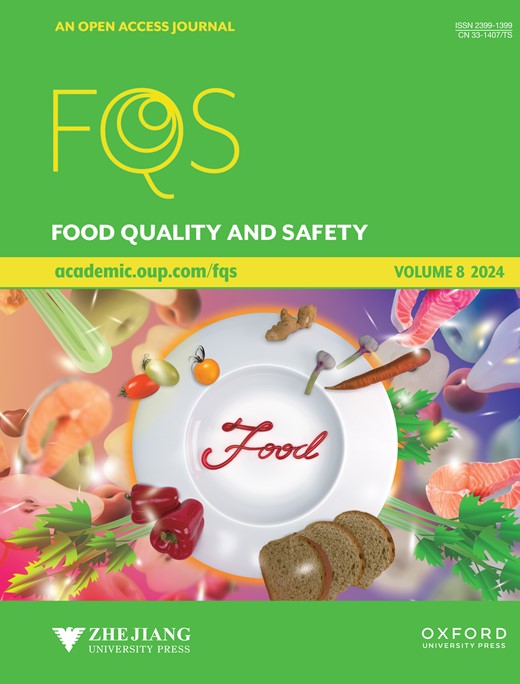冷藏过程中温度波动和冲击对猪肉和三文鱼质量的影响
IF 4.4
3区 农林科学
Q2 FOOD SCIENCE & TECHNOLOGY
引用次数: 0
摘要
冷藏被认为是保存肉制品的主要技术。然而,在制冷过程中,温度变化通常被工业忽略,这对产品质量有影响。因此,我们对保存0、5、9、12和15天的猪里脊和鲑鱼里脊进行了研究,并根据4°C建立了不同的温度波动和冲击。数据显示,±2℃波动组肉质总挥发性碱性氮、总活菌数、脂质氧化等参数较恒温组变化显著。此外,温度波动和冲击组均加速了肌原纤维蛋白的降解,而±2°C波动组的desmin表达和细菌的物种丰富度/多样性均显著低于恒温组。简而言之,温度波动和冲击加速了肌肉结构完整性的破坏。此外,这两种条件都通过逐渐扩大失水渠道加速了肉的腐败,从而降低了肉的可食性。本研究为肉制品冷藏温度的合理利用提供了新的理论依据。本文章由计算机程序翻译,如有差异,请以英文原文为准。
Role of temperature fluctuations and shocks during refrigeration on pork and salmon quality
Refrigeration is considered as prime technology for preserving meat products. Notwithstanding, temperature alterations is commonly ignored by industry during refrigeration, which have impact on product quality. Thus, we conducted research on the pork loin and salmon fillets that were preserved for 0, 5, 9, 12, and 15 days, whereas different temperature fluctuations and shocks were established depending on 4°C. Data exposed that several meat parameters such as total volatile basic nitrogen, total viable count, and lipid oxidation were significantly changed in ±2℃ fluctuations group than constant temperature group. Additionally, both temperature fluctuations and shocks groups accelerated the myofibril protein degradation, while desmin expression and species richness/diversity of bacteria were significantly reduced in ±2°C fluctuations group than constant temperature group. Briefly, temperature fluctuations and shocks accelerated the destruction of muscle structural integrity. Furthermore, both conditions accelerated the meat spoilage via progressively expanding the water-loss channels, which can reduce the meat edibility. This study provides a new theoretical basis about the proper uses of refrigerated-temperature for storing meat products.
求助全文
通过发布文献求助,成功后即可免费获取论文全文。
去求助
来源期刊

Food Quality and Safety
FOOD SCIENCE & TECHNOLOGY-
CiteScore
7.20
自引率
1.80%
发文量
31
审稿时长
5 weeks
期刊介绍:
Food quality and safety are the main targets of investigation in food production. Therefore, reliable paths to detect, identify, quantify, characterize and monitor quality and safety issues occurring in food are of great interest.
Food Quality and Safety is an open access, international, peer-reviewed journal providing a platform to highlight emerging and innovative science and technology in the agro-food field, publishing up-to-date research in the areas of food quality and safety, food nutrition and human health. It promotes food and health equity which will consequently promote public health and combat diseases.
The journal is an effective channel of communication between food scientists, nutritionists, public health professionals, food producers, food marketers, policy makers, governmental and non-governmental agencies, and others concerned with the food safety, nutrition and public health dimensions.
The journal accepts original research articles, review papers, technical reports, case studies, conference reports, and book reviews articles.
 求助内容:
求助内容: 应助结果提醒方式:
应助结果提醒方式:


